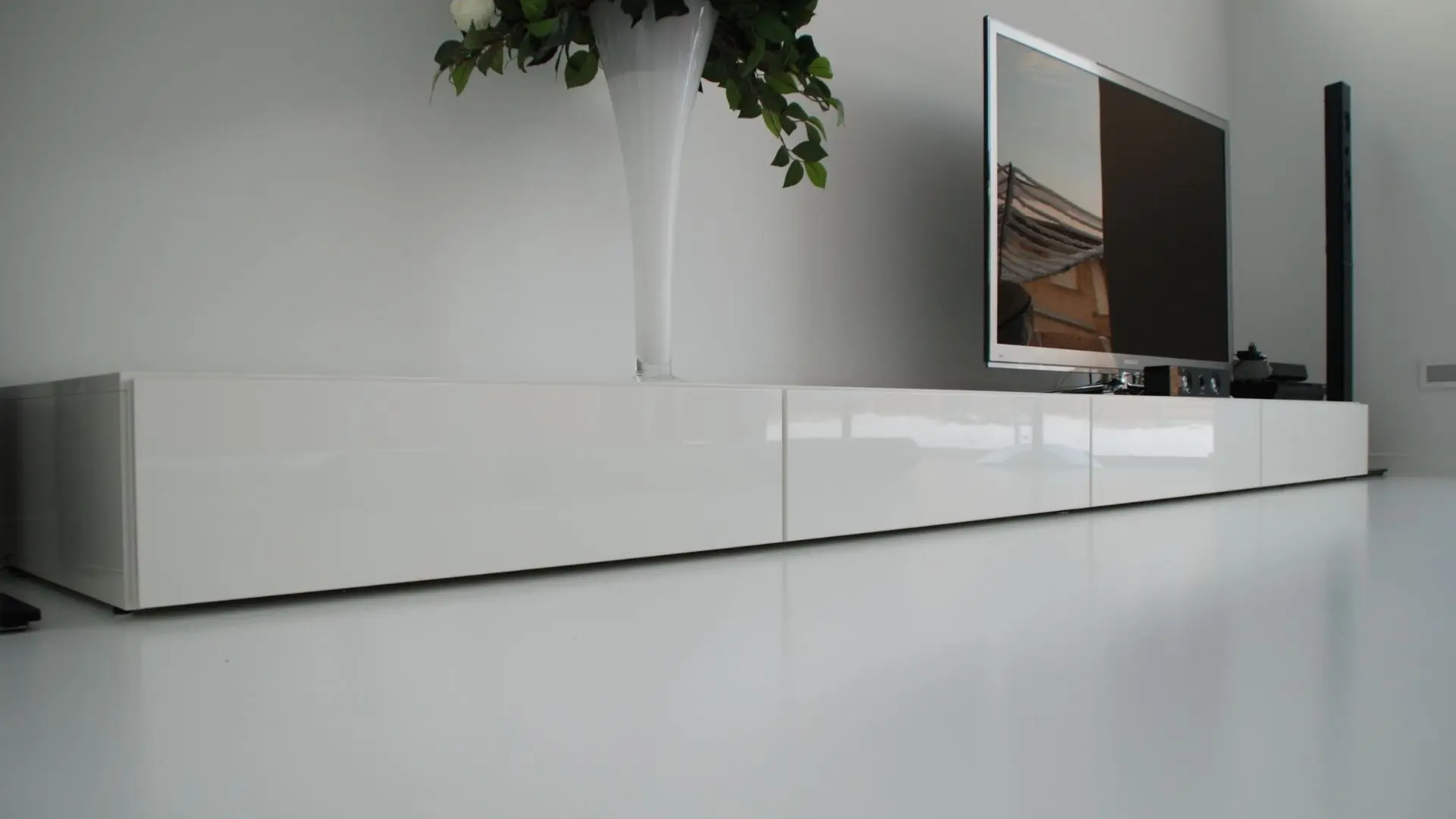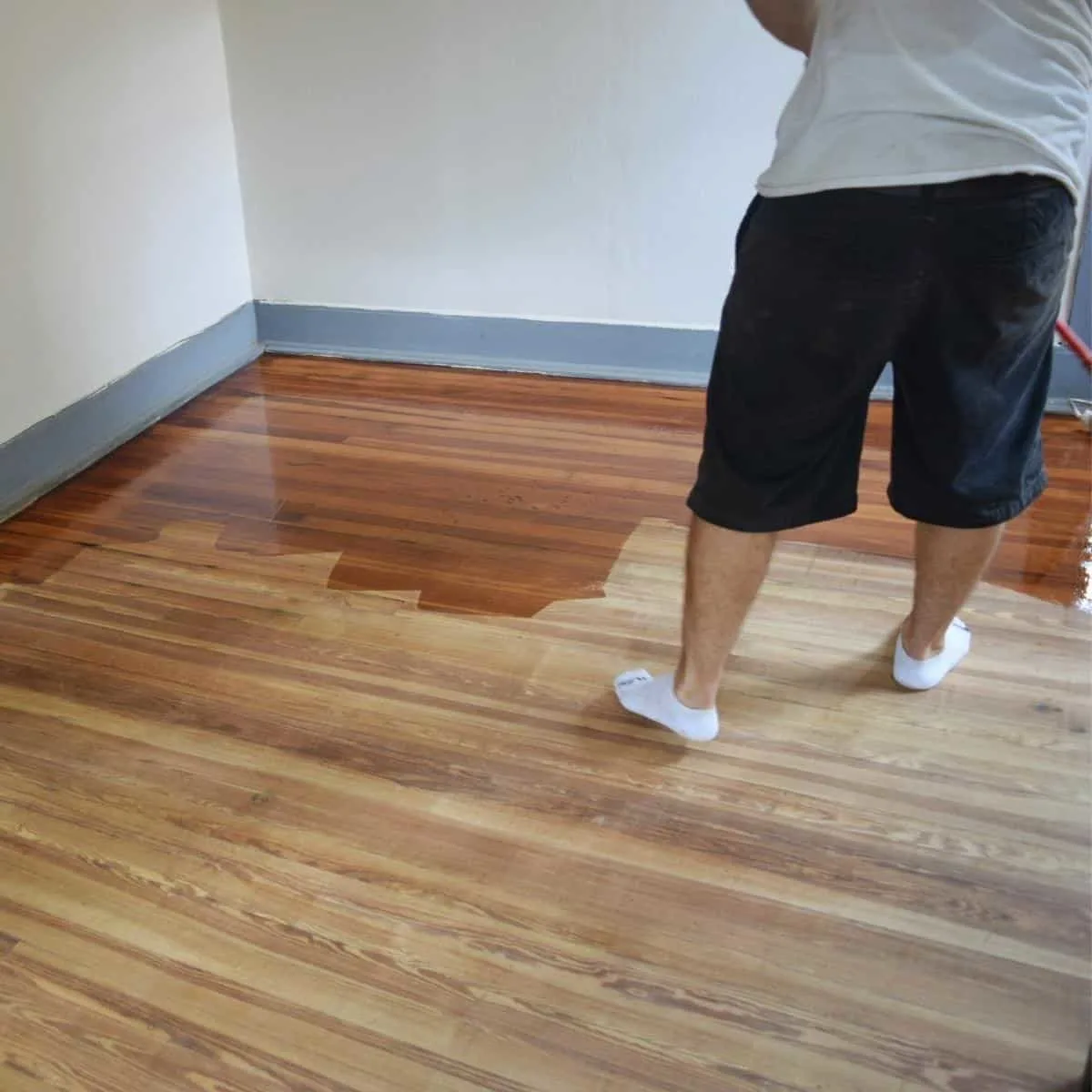Have you ever stared at a piece of furniture, its beautiful wood grain begging for a protective touch, and wondered if you could use the same polyurethane you’d apply to your floors? It’s a common question, and the answer, like many things in the world of DIY, is a complicated “it depends.” While both flooring and furniture are made of wood, their needs and the expected wear they receive are quite different. This article delves into the world of polyurethane, exploring its nuances and guiding you toward the best choice for your furniture.

Image: topcoatconcrete.com.au
Polyurethane is a clear, protective coating that forms a hard, durable film over surfaces, providing resistance to moisture, scratches, and other forms of damage. It’s known for its ability to enhance the appearance of wood by bringing out its natural beauty and creating a smooth, glossy finish. Floor polyurethane has become a favorite for homeowners, protecting their floors from the daily onslaught of footsteps, furniture scuffs, and dropped objects. But when it comes to furniture, a bit more finesse is needed to ensure a successful and beautiful final product.
Delving into the World of Polyurethane
Polyurethanes come in a variety of forms, each specifically designed to tackle distinct needs. These differences are key to understanding whether floor polyurethane is the right fit for your furniture.
1. Formulations:
- Oil-based polyurethanes: These are known for their durability and beautiful, high-gloss finish. However, they take longer to dry and emit strong odors, making them less suitable for indoor furniture projects.
- Water-based polyurethanes: These are gaining popularity due to their quick drying times, low odor, and ease of clean-up. While they offer a good level of durability, they may not be as tough as oil-based options.
- Floor polyurethanes: These formulations are specifically engineered to withstand the heavy traffic and wear and tear of floors. This strength is often achieved through thicker coatings and the addition of certain additives, which can make them less suited for furniture.
2. Durability and Finish:
- Floor polyurethane is designed to withstand heavy foot traffic and even the occasional dropped hammer. It often comes in high-gloss finishes to hide minor imperfections, which might be too shiny for certain furniture styles.
- Furniture polyurethane, on the other hand, is typically formulated to provide a more subtle finish, allowing the wood’s natural beauty to shine through. It’s also designed to be less brittle, preventing cracking or flaking as the wood expands and contracts with temperature changes.
Why Furniture Deserves a Specialized Approach
While floor polyurethane might seem like a tempting shortcut, there are several reasons why using it on furniture might lead to less-than-desirable results:
1. Surface Texture:
- Furniture often has a smoother finish than floors. Floor polyurethane, due to its thickness and intended purpose, can leave an overly glossy or even uneven surface on finer furniture pieces.
2. Wood Movement:
- Furniture wood is more prone to expansion and contraction due to changes in humidity. Floor polyurethane’s thickness can restrict this movement, leading to cracks or peeling over time.
3. Finish and Aesthetics:
- While gloss is preferred for floors, it can be overpowering on furniture, masking the natural beauty of the wood. Furniture polyurethane is specifically formulated to provide a gentler sheen, enhancing the wood’s texture without overshadowing it.
What to Do Instead: The Right Choice for Your Furniture
Choosing the right polyurethane for your furniture hinges on your desired finish and the type of wood you’re working with.
- For a Classic, Polished Look: Opt for a high-quality furniture polyurethane with a durable finish. Water-based options offer a good balance of durability and ease of use.
- For a Natural, Matte Finish: Look for a water-based polyurethane designed for furniture and specifically formulated for a matte or satin finish.
- For a Protective Seal: Consider a polyurethane designed for outdoor furniture or marine applications, providing extra resistance to moisture and UV rays.

Image: www.thehandymansdaughter.com
Expert Insights and Actionable Tips
- Preparation is Key: Always clean and sand your furniture thoroughly before applying polyurethane. This helps create a smooth surface for the polyurethane to adhere to.
- Thin Coats are Best: Applying several thin coats of polyurethane is better than one thick coat. This allows the polyurethane to dry properly and prevents runs and drips.
- Consider a Test Patch: Before committing to your furniture, try a test patch on an inconspicuous area to ensure the finish and durability meet your expectations.
- Ventilation is Essential: Pay attention to the ventilation guidelines provided by the manufacturer, especially with oil-based polyurethanes.
- Experiment with Finishes: Don’t be afraid to experiment with different types of finishes, including satin, semi-gloss, and gloss, to achieve the look you desire.
Can You Use Floor Polyurethane On Furniture
Conclusion
As with most DIY projects, the key to success lies in choosing the right tools for the job. While floor polyurethane might offer a protective layer, its strength comes at the cost of potential aesthetic compromises for furniture. By selecting a furniture-specific polyurethane and by carefully preparing your piece, you can ensure a beautiful, durable finish that will protect your furniture for years to come. So, explore the world of polyurethane with confidence, knowing that there’s a solution designed to bring out the best in your furniture. And remember, when it comes to your cherished pieces, choosing the right product can make all the difference in their longevity and beauty. Do you have any experience with different types of polyurethane? Share your advice and insights in the comments below!






